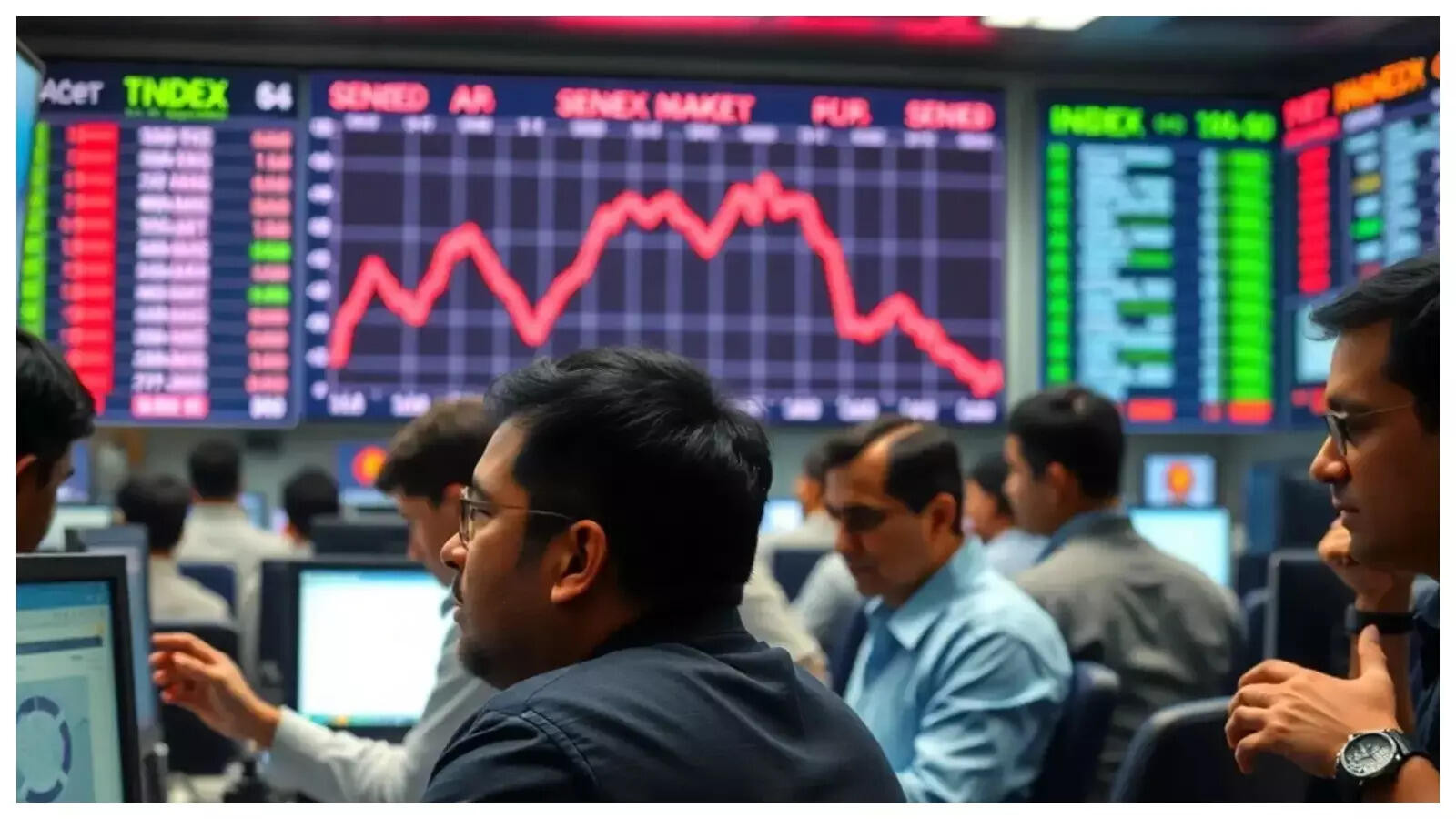Asian markets mostly dipped Wednesday, mirroring Wall Street’s first decline in eight sessions, as gold hit a new record high. Hong Kong and Taiwan saw losses, while Japan’s Nikkei also traded lower. The yen weakened against the dollar on expectations of continued low interest rates in Japan. US futures and oil prices, however, edged up.
Navigating Choppy Waters: Why Are Asian Stocks Down?
The hum of global markets isn’t always a steady thrum. Sometimes, it’s punctuated by jarring dips and unexpected tremors. Right now, many investors across Asia are feeling a bit of that unease as stock markets grapple with a sea of red. But what’s behind these unsettling movements? Let’s dive in.
The ripple effect from Wall Street’s recent stumble is a significant factor. When the US market catches a cold, Asian exchanges often feel the sniffles. Investor sentiment, a notoriously fickle beast, is heavily influenced by trends in the US, the world’s largest economy. So, a downward trend there can quickly translate into cautious trading and selling pressure across Asia. The domino effect is real, and it’s playing out right now.
Hong Kong’s Hang Seng Takes a Hit
Hong Kong’s Hang Seng index is a particularly compelling case study. It’s shed over 280 points recently, a substantial drop that highlights the anxieties swirling around the market. Several factors contribute to this. Concerns about the Chinese economy, already simmering beneath the surface, are now boiling over. Property sector woes, regulatory uncertainties, and ongoing geopolitical tensions are all adding to the pressure.

It’s not just Hong Kong feeling the chill, though. Japan’s Nikkei is also down, albeit to a lesser extent. While Japan’s economic outlook appears brighter than some of its regional neighbors, it’s not immune to global headwinds. External demand plays a crucial role in Japan’s export-oriented economy, so any slowdown in global growth inevitably impacts Japanese companies and, consequently, its stock market.
Beyond the Headlines: Unpacking the Reasons Behind the Market Dip
While Wall Street’s performance provides a broad context, understanding the nuances requires looking at specific regional factors. For example, South Korea’s Kospi and Australia’s ASX 200 are also experiencing downward pressure. These markets face their own unique challenges, ranging from commodity price fluctuations to domestic policy shifts.
Inflationary pressures are another key concern. While some countries have made progress in taming inflation, the fight is far from over. Persistent inflation can erode consumer spending and business investment, dampening economic growth and weighing on stock valuations. Central banks across the region are walking a tightrope, trying to balance the need to control inflation with the risk of triggering a recession.
Geopolitical tensions, particularly in the South China Sea and the Korean Peninsula, add another layer of uncertainty. Any escalation of these tensions could send shockwaves through regional markets, prompting investors to seek safer havens. The constant threat of disruption makes it difficult to maintain a steady course.
What’s Next for Asian Markets?
Predicting the future is always a fool’s errand, but we can identify key factors that will shape the trajectory of Asian markets in the coming weeks and months. Watching the flow of foreign investment is crucial. A continued outflow of capital could exacerbate the downward trend, while a return of investor confidence could provide a much-needed boost. See how other outside influences affect investment strategies, for example, understanding the principles of tax-loss harvesting.
Furthermore, upcoming economic data releases will provide valuable insights into the health of regional economies. Stronger-than-expected growth figures could help to allay fears of a slowdown, while disappointing numbers could reinforce negative sentiment. The performance of corporate earnings will also be closely scrutinized, offering clues about the resilience of businesses in the face of challenging conditions.
Central bank policy decisions will remain a focal point. Investors will be paying close attention to any signals about future interest rate hikes or cuts, as these decisions can have a significant impact on borrowing costs and economic activity.
Navigating these choppy waters requires a long-term perspective and a diversified investment strategy. Market volatility is a normal part of the economic cycle, and downturns often present opportunities for patient investors to buy quality assets at discounted prices. By staying informed and focusing on fundamentals, investors can weather the storm and position themselves for future growth. Ultimately, resilience and adaptability are key to success in the ever-evolving world of Asian stock markets.







